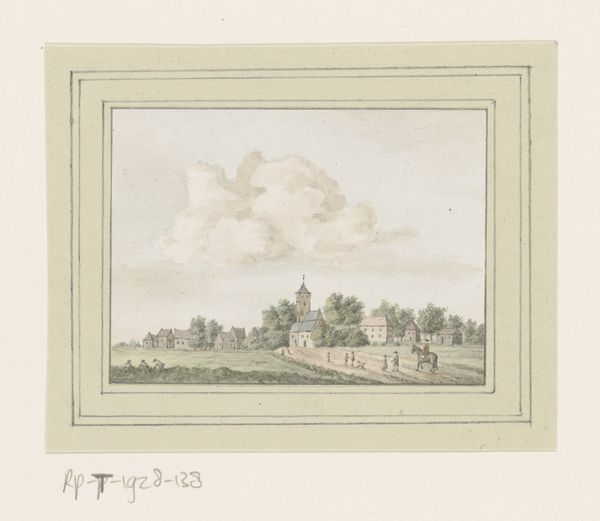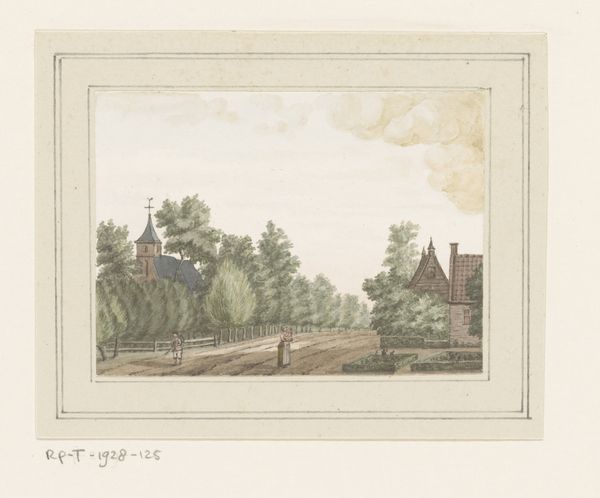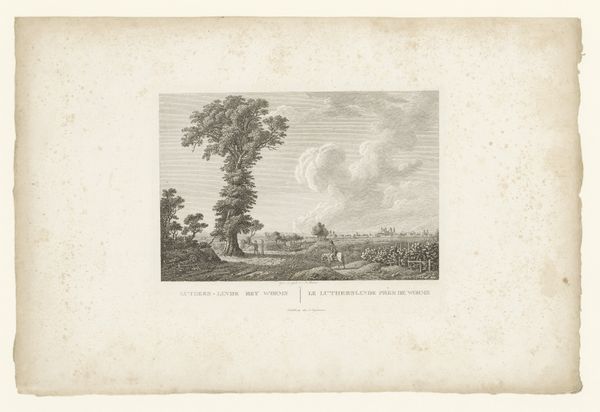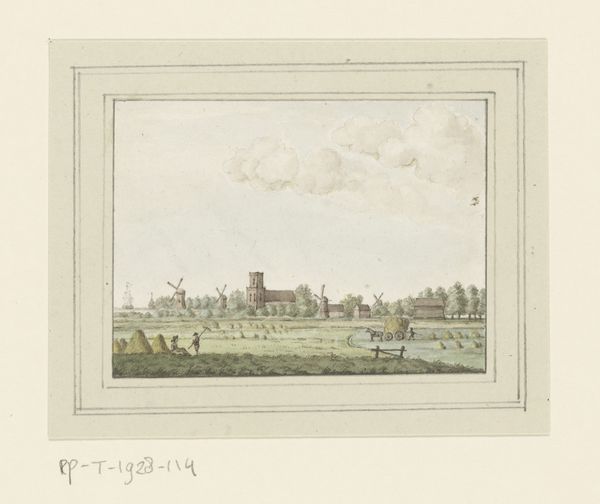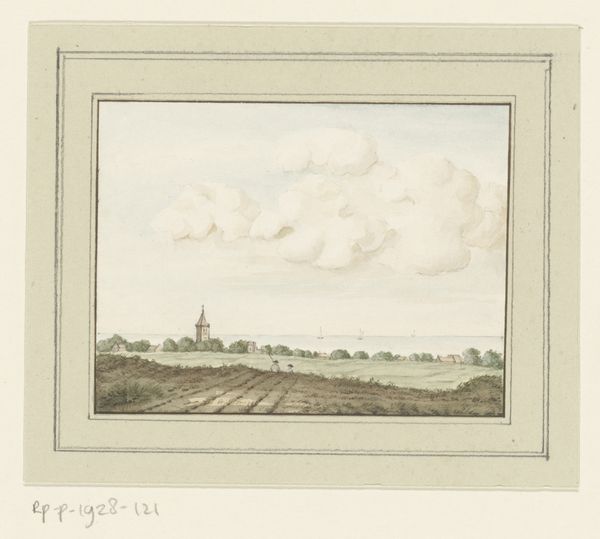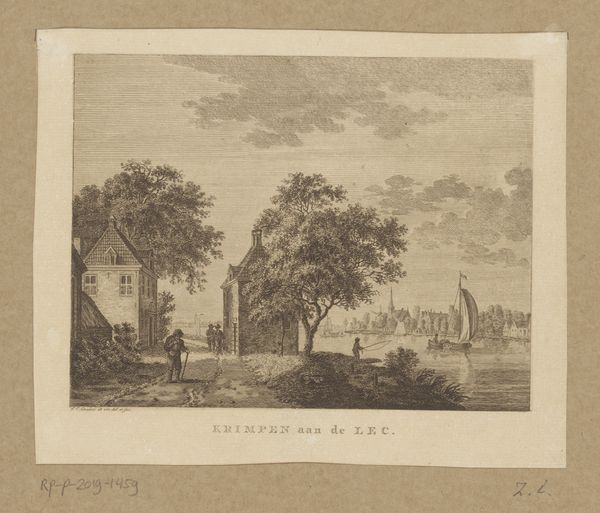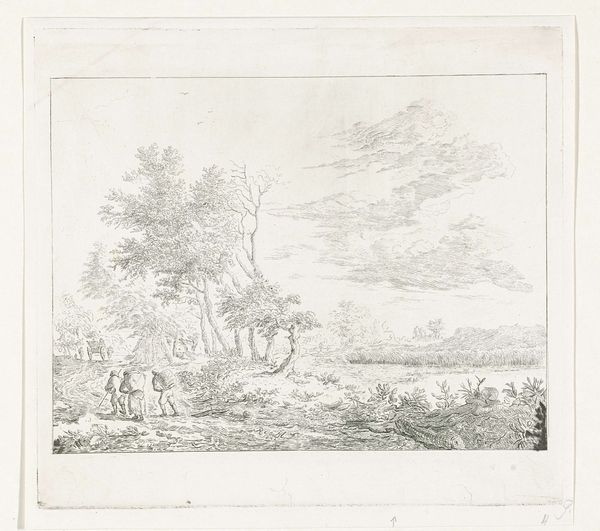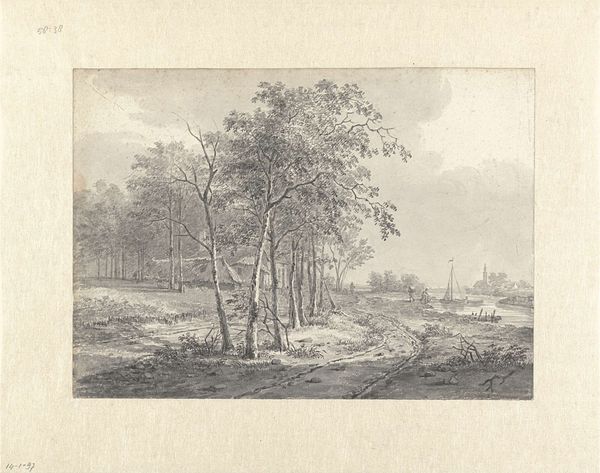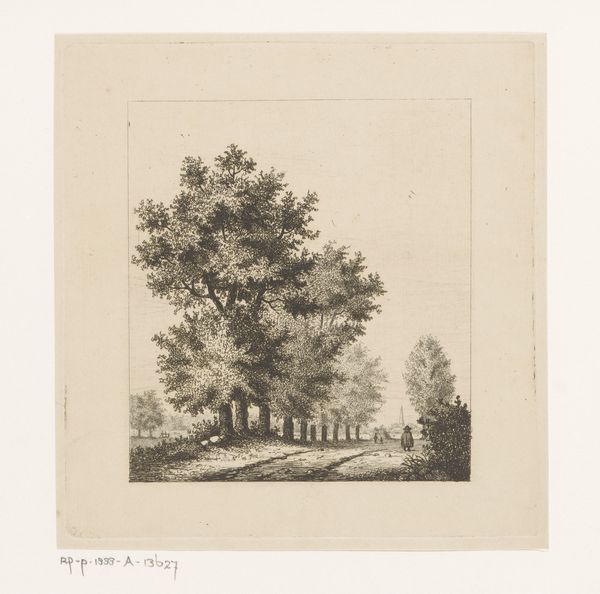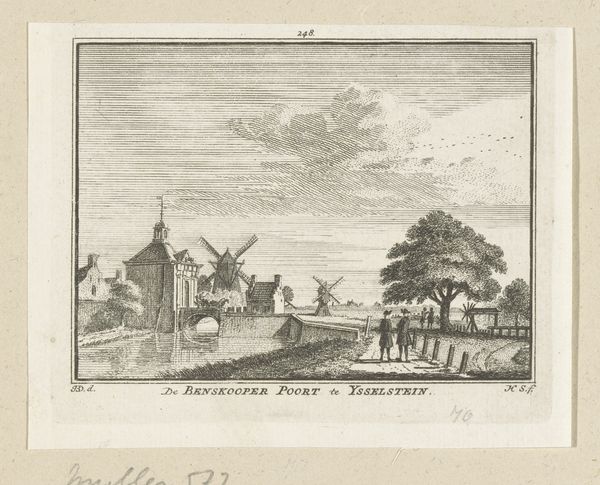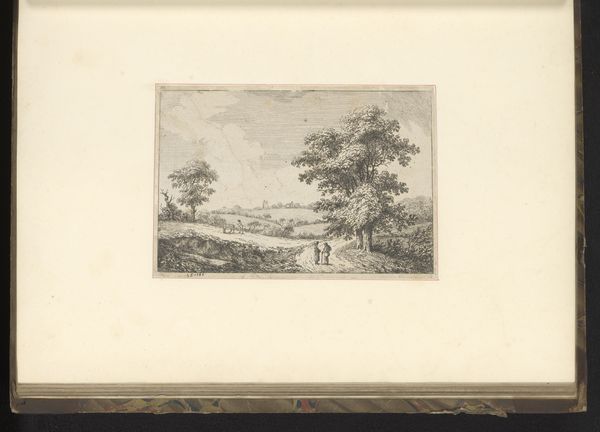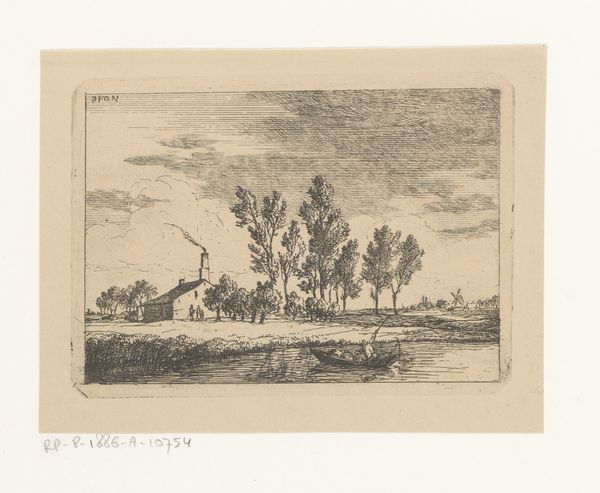
Dimensions: height 90 mm, width 111 mm
Copyright: Rijks Museum: Open Domain
Curator: Let's discuss this beguiling watercolour titled "Gezicht op Loosdrecht," dating from after 1757. What's your first take? Editor: There's an immediate serenity that washes over me; the light seems subdued yet luminous. The strokes suggest a simple rendering of material: watercolor, paper, place. Curator: I'm interested in how "simple rendering" becomes complex with what Loosdrecht represented—a place of relative rural peace contrasting the burgeoning mercantilism of the Dutch Golden Age, an idea ripe for exploration within period landscape painting. What do you see as being made apparent through its construction and material makeup? Editor: Well, look at the fence in the foreground – seemingly plain, perhaps just to divide properties but maybe also pointing to early shifts in land use driven by profit motives. Notice, too, the thinness of the pigment, as if the paint is used almost reluctantly. What materials may lack in depth is compensated in perspective. Curator: Absolutely, that very tension – reluctance or constraint – underscores the complexities within idealized pastorals. We are, in a sense, dealing with the mythology of a place where genre painting can meet romanticism. Editor: So the work speaks to its specific moment within that development of those ideas as they evolve with shifting ideas? I find it interesting that such detailed brushstrokes could convey more than what’s represented— a sense of labour inherent in the materiality itself. What labour relations existed within painting at that moment in the location. It becomes like a form of visual documentation of societal shifts, maybe? Curator: Precisely. This artist, anonymous to us now, engages in this very dialogue between their landscape, materials, society, and representation in the broader social and political contexts. And we are, again, in dialogue with it. It provokes questions about land use, labor, and the construction of "nature". Editor: Yes, the medium’s own character helps. In all its gentleness, there’s almost an attempt to give a voice to that landscape itself by exposing its character in making this work, not simply observing and rendering a location. Curator: A poignant reflection that links the anonymous maker to contemporary social questions. Editor: Indeed, there are layers upon layers embedded in that delicate watercolor. Thank you for the insight!
Comments
No comments
Be the first to comment and join the conversation on the ultimate creative platform.
